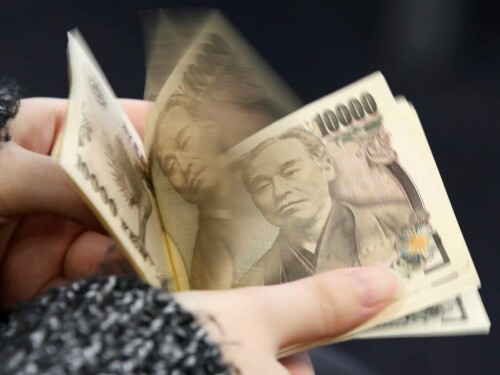Dollar Gains as Yen Slides on BOJ’s Revised Growth Forecasts
SINGAPORE: The dollar experienced an upswing on Thursday, buoyed by a weakening yen after the Bank of Japan (BOJ) adjusted its growth predictions downward, citing the impact of U.S. tariffs. The central bank maintained its interest rates, and investors are closely monitoring developments in the trade war alongside awaiting key U.S. employment figures.
The yen depreciated by approximately 0.8%, reaching 144.23 against the dollar, marking its lowest level since mid-April. The BOJ’s decision to keep interest rates steady was widely anticipated and unanimously agreed upon. However, the revised economic outlook has led investors to believe that future rate increases are less probable.
Analyst Commentary
According to Bart Wakabayashi, a branch manager at State Street in Tokyo, the situation suggests a “holding pattern.” He noted that uncertainties surrounding U.S. policies are prompting a cautious approach among market participants.
The Bank of Japan has projected a real GDP growth of 0.5% for the fiscal year 2025-26, a decrease from the previous forecast of 1.1%.
The dollar had previously been significantly affected by trade tensions, with fluctuating tariffs impacting growth expectations and dampening confidence, culminating in its most substantial monthly decline in two and a half years through April.
However, the dollar has regained some ground following the suspension of certain tariffs and indications of potential agreements, including with China, which currently faces the highest tariffs.
Broader Market Impact
The dollar’s resurgence continued on Thursday, leading to a roughly 0.4% decrease in the euro, hitting a two-week low of $1.1288. Similarly, the pound weakened by about 0.4%, reaching $1.3280.
Richard Franulovich, head of currency strategy at Westpac in Sydney, observed that the market is currently in a phase of de-escalation, which is influencing trading strategies.
President Trump mentioned on Wednesday the possibility of trade agreements with India, South Korea, and Japan, expressing optimism about reaching a deal with China.
Earlier on Wednesday, U.S. Trade Representative Jamieson Greer stated that there were no ongoing official discussions with China. However, a social media account linked to Chinese state broadcaster CCTV reported that the U.S. administration had initiated contact with China to explore potential talks.
Recent U.S. data revealed that a surge in imports, driven by anticipation of tariffs, led to a contraction in GDP during the first quarter. Nevertheless, some economists view the sustained private demand as a positive indicator.
Jobless claims and the ISM manufacturing survey are scheduled for release later on Thursday. The April jobs report on Friday will provide further crucial data for assessing potential recession risks. Current projections suggest a slowdown in hiring, with expectations around 130,000 new jobs.
The Australian and New Zealand dollars remained relatively stable against the U.S. dollar, trading within the upper ranges of their recent patterns.
The Australian dollar was around $0.6391, supported by stronger-than-anticipated inflation data, which tempered expectations of more dovish rate adjustments. The New Zealand dollar maintained its position at $0.5928.



Comments (0)
No comments yet. Be the first to comment!
Leave a Comment